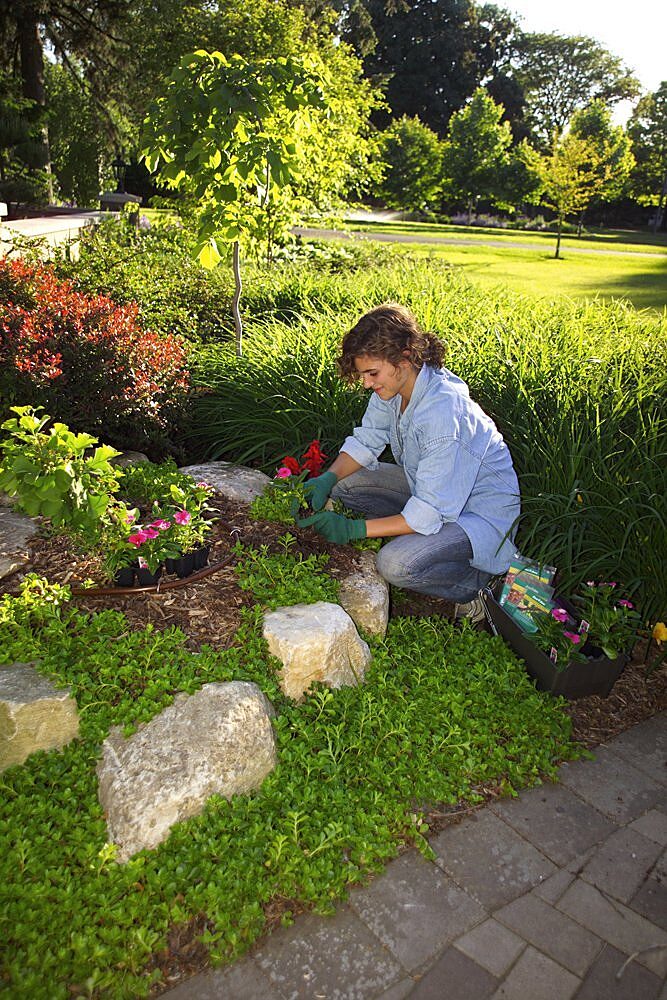Water Saving and Lawn Care Tips
 If you know how to take care of it, your lawn and garden can give you years of enjoyment for surprisingly little effort.
If you know how to take care of it, your lawn and garden can give you years of enjoyment for surprisingly little effort.
When it comes to watering your yard, you may be able to save yourself some “green” without your lawn turning brown — by using an automatic irrigation system. If that system is correctly designed, installed and maintained, it can keep your landscape looking lush on the least amount of water.
Proper watering is a simple step, but it is one of the most important things you can do to keep your lawn healthy—and experts say a healthy lawn can raise your home’s value by as much as 14 percent. Here are some tips to help you see to it that you’re watering right:
Divide By Zones
Different plants need different amounts of water. Divide your yard into separate irrigation zones so the grass can be watered separately and more frequently than groundcovers, shrubs and trees.
Keep It Balanced
Put measuring cups in various places around your lawn and run the sprinklers for 15 minutes. This will give you an idea of how much water the grass is getting and where. You’re looking for about one to two inches—depending on the soil—evenly distributed. An underground sprinkler system is probably the best way to be sure the lawn is evenly covered.
Waste Not, Want Not
The greatest waste of water comes from applying too much, too often—much of it runs off and is never absorbed. Instead of watering for one long continuous session, try splitting the watering time into shorter periods and take 15-minute breaks in between each session. This will let the water soak in, while minimizing runoff.
Watch The Clock
Water between 5 a.m. and 10 a.m.—when the sun is low, winds are calm and temperatures are cool. Midday watering tends to be less efficient because of water loss due to evaporation and windy conditions during the day. Watering in the evening isn’t a good idea either because leaves can remain wet overnight—an open invitation for fungus to grow. By watering in the morning, you give the leaves a chance to dry out during the day.
Adjust The System to the Season and Be Rain Smart
Adjust your irrigation system as the seasons and weather change. You can also install a shut-off device that automatically detects rain or moisture. These devices are inexpensive and let you take advantage of nature’s free watering service.
Water Only What Grows
if you have an underground sprinkler system, make sure the heads are adjusted properly to avoid watering sidewalks and driveways. A properly adjusted sprinkler head should spray large droplets of water, not a fine mist, to minimize evaporation and wind drift.
Consider Drip
When it comes to watering individual trees, flowerbeds, potted containers or other non-grassy areas, you can apply water directly to the roots with low volume drip irrigation. This will reduce water waste through evaporation or runoff and keep weeds from growing.
Do Routine Inspections
Periodically check your sprinklers to make sure everything is working properly. A clogged head or a torn line can wreak havoc on your landscape and water bill.
Wrapping Up
An automatic underground sprinkler system can help you with all of these things, without making you have to uncoil the hose every time you need to water your lawn. It’s easy to install and even easier to operate, and can save you hours of work just in the first few months after installation.
To help you get started with automatic underground irrigation, Rain Bird offers customized design services that provide a preliminary plan, a materials list and helpful installation advice. Knowledgeable customer support representatives are also available toll-free at 1-800-RAINBIRD to answer your questions about irrigation.
Or if you prefer to have a qualified irrigation contractor install your system for you, Rain Bird offers a free Contractor Referral Service to help you find independent professionals in your local area.
Either way, an automatic irrigation system from Rain Bird can help you keep your lawn and landscape looking beautiful for years to come.